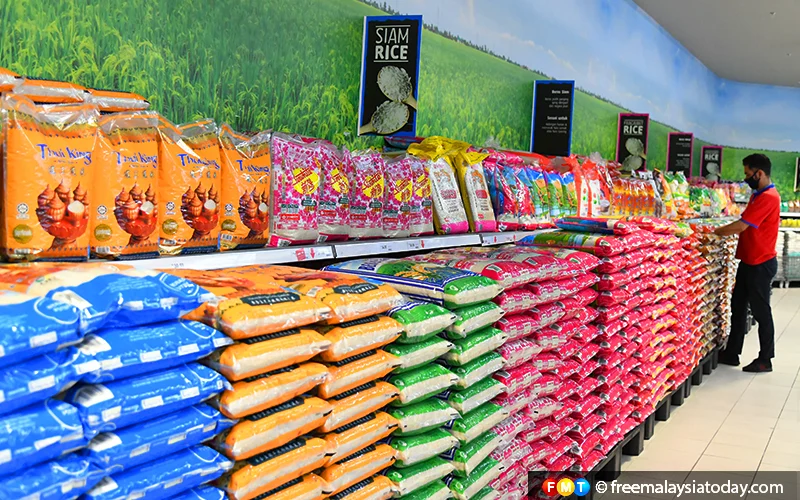
The price of imported white rice in Malaysia increased by about 30%, from RM2,350 per metric tonne to RM3,200, in August – a development that highlights how the cost of living continues to be of concern to Malaysians.
In light of this, which states have experienced the highest increase in food prices? Here’s a rundown using data obtained from the statistics department’s F&B consumer price index, utilising the average growth rate of prices from January to August this year.
1. Selangor
It is no surprise that Selangor takes the top place on this list: from January to August, food and beverage prices experienced a growth rate of 7.1% compared with 2022.
Selangor houses the biggest population in Malaysia (7.2 million) and is a primary centre of employment. Many are attracted by the new as well as existing sectors and jobs here and in neighbouring Kuala Lumpur.
While there are no breakdowns on the specific food items driving the increase, people in Selangor will likely be seeing their favourite restaurants and supermarkets charging higher prices.
2. Sarawak
With an average price growth of 7.1% compared with last year, the Land of the Hornbills ties with Selangor.
Sarawak recorded the third-highest absolute poverty rate of 12.9% in 2020, up from around 9% in 2019. While this could be attributed to the pandemic, the sharp increase in food prices may pose a serious threat to many Sarawakians.
Zeroing in on the state’s favourite noodle dish, kolo mee, wheat prices have been high owing to the war in Russia and Ukraine. Pork prices have also increased sharply, as an outbreak of African swine flu wiped out much of the pig population in Sarawak last year.
3. Pahang
The biggest state in peninsular Malaysia, Pahang saw an F&B price increase of 5.9% between January and August.
Being in the middle of the peninsula, with dense forests and rough terrain, it costs a bit more to transport food from seaports to various areas in this state.

Similar to Sarawak, the increase in prices is detrimental to the poverty situation in Pahang, the rate of which was 8.8% in 2020.
Luckily, Cameron Highlands generates a lot of vegetable produce, but the spike in fertiliser prices because of the Russia-Ukraine war has made costs higher for many farmers here.
4. Perak
Ah, Perak, home to many local favourites. Unfortunately, food prices increased by 5.7% this year. Meanwhile, Perak’s poverty rate was a whopping 11.4% in 2020.
Ipoh’s most well-known dish is arguably beansprout chicken. Last year, the price of chicken increased owing to a rise in animal feed prices – again, a consequence of the ongoing Russia-Ukraine conflict.
5. Penang
Oh, no, will char kuey teow and laksa be more expensive? Penang makes the list with an average price growth of 5.6%.
Fortunately, as of 2020, its poverty rate was relatively low at 3.3%.
Still, this should not be taken lightly: being an industrial hub, Penang is one of the key states in terms of employment. Coupled with sky-high property prices, this increase in food costs may prove to be a double whammy for Penangites.
6. Melaka
The heritage state registered an average F&B price growth of 5.5% from January to August. As of 2020, the poverty rate was a high 6.1%.
As such, Melakans would do well to monitor their spending – even, sadly, if it revolves around their delicious satay celup.

7. Negeri Sembilan
Home to the delicious Seremban siew pau, food prices in Negeri Sembilan saw an average growth of 5.5% for the corresponding period, with the poverty rate at a high 6.8% as of 2020.
8. Johor
From January to August, this southern state averaged a price growth of 5.3%.
Notably, the situation here is unique, given the influx of Singaporean tourists crossing the border: their strong purchasing power may have contributed to a sharp price increase for many foods.
While Johoreans welcome the money, it isn’t doing them any favours when it comes to the rising cost of living.
This article was written by Su-Wei Ho for MyPF. - FMT



No comments:
Post a Comment
Note: Only a member of this blog may post a comment.